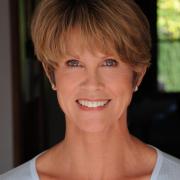Play - nature's biological plan for learning!
Historically, the approved approach to early childhood education in the US has, for decades, swung between support for whole child development/ play and focus on cognitive development of the child / academics.
In 1957, when the Russians won the race to space with the launching of Sputnik, the US was traumatized. Educational policy, dictated by political agendas, suddenly repudiated play and shifted to an overemphasis on the 3 R’s and intellectual skills. This new focus, carried out through an accompanying emphasis on standardized testing, was not a result of new information from developmental research, but instead, a reaction to Admiral Hyman G. Rickover’s explanation of why the Russians “beat us”. The admiral, by asserting that young children in Russia were being trained in mathematics while American children were busy finger painting, unwittingly drew a line in the sandbox of early childhood education, pitting academics and play against each other.
In late 1970s - early 1980s, with the success of David Elkind’s books, The Hurried Child (1981) and Miseducation: Preschoolers at Risk (1987), the pendulum swung back. Social and emotional development was seen as a valuable part of every child’s early learning. It was widely accepted by parents and teachers that social – emotional skills strongly affected intellectual growth. As a result, there was also a renewed appreciation for the value of play.
It wasn’t long, however, before policy swung the other way again. During the Reagan and George H. W. Bush years, Head Start was back focusing on cognitive measures to assess program effectiveness. To get a good grade on the Head Start Measures Battery, teachers followed an accompanying curriculum, which led to the issues of teaching to the test and the devaluation of play.
Then, in 1995, the National Educational Goals Panel officially found a middle ground by defining school readiness as consisting of five dimensions: (a) physical well-being and motor development, (b) social and emotional development, (c) approaches to learning, (d) language development, and (e) cognition and general knowledge. This definition emphasized interconnection and a wholistic approach, which was validated by a growing body of brain and developmental research. In 1998, Head Start followed with a new statement of goals that included physical and mental health, social and emotional development , pre-academic skills, and parental involvement – all factors proven to be essential for future school success.
Inexplicably, the tide turned again shortly thereafter with No Child Left Behind. Though well-intentioned, President George W. Bush’s initiative, designed to ensure that every American child be a proficient reader, is short-sighted, if not futile. Reading is only one cognitive skill – one that is physiologically and inextricably intertwined with the physical, social, and emotional development of the child learning to master it. NCLB has, if nothing else, shown that the sit down and perform rote worksheets / drill and grill approach to literacy and learning in early childhood does not work.
Currently, fortunately, we are back to what the founders of Head Start recognized in 1965, 40 years ago - the importance of nurturing the whole child. The first Head Start programs understood the value of emotional and social intelligence for school readiness – and cultivated it through engaged, purposeful play. Emotional self-regulation is a key component of learning. Without it, children cannot focus, filter out distractions, work in groups, organize their behavior, or even listen. As children play, they develop self-regulation through taking turns, learning to cooperate, planning ahead, and navigating frustration, sharing, disappointment, delayed gratification, and other emotions. Play also provides opportunities for developing cognitive skills - language, early literacy, concepts, problem solving, perspective, representation, memory, and creativity.
In 2007, the ASCD's Whole Child Initiative shifted the conversation away from play vs academics to one about the long term development and success of the whole child. The intention is to ensure that every child, in every school, in every community is healthy, safe, engaged, supported, and challenged. This approach is about laying a foundation for lifetime well-being, community engagement, and personal fulfillment. Just as we cannot separate our bodies from our minds, we cannot separate play from learning. As Dr. Pearce wrote so many years ago in his book , The Magical Child: Play is nature’s biological plan for learning.
Here at Move with Me, we are obviously advocates of play and whole child education. Our unique combination of story, exercise, and self-regulation truly supports the simultaneous development of physical fitness, emotional stability, and learning readiness. Here’s the scientific breakdown of how and why:
Stories –
- Focus attention and engage participant in an empathic response, creating a significant physiological effect on the body and on behavioral choices
- Activate episodic memory and light up the whole brain for learning
Embodied Self-Regulation Skills using Bilateral and Crosslateral Intentional Movement -
- Decrease off-task behavior in preschool age children
- Improve creative problem solving, language skills, and memory
Stories -
- Increases attention span and ability to ignore distractions and concentrate effectively
- Enhances behavioral regulation, metacognition, and overall global executive function
Cardio Exercise -
- Over-rides the body’s physiological response to stress
- Improves the cognitive control of attention
- Enhances academic performance
Slow Intentional Movement –


The views and opinions expressed in this post are those of the author(s) and do not necessarily reflect those of MomsRising.org.
MomsRising.org strongly encourages our readers to post comments in response to blog posts. We value diversity of opinions and perspectives. Our goals for this space are to be educational, thought-provoking, and respectful. So we actively moderate comments and we reserve the right to edit or remove comments that undermine these goals. Thanks!